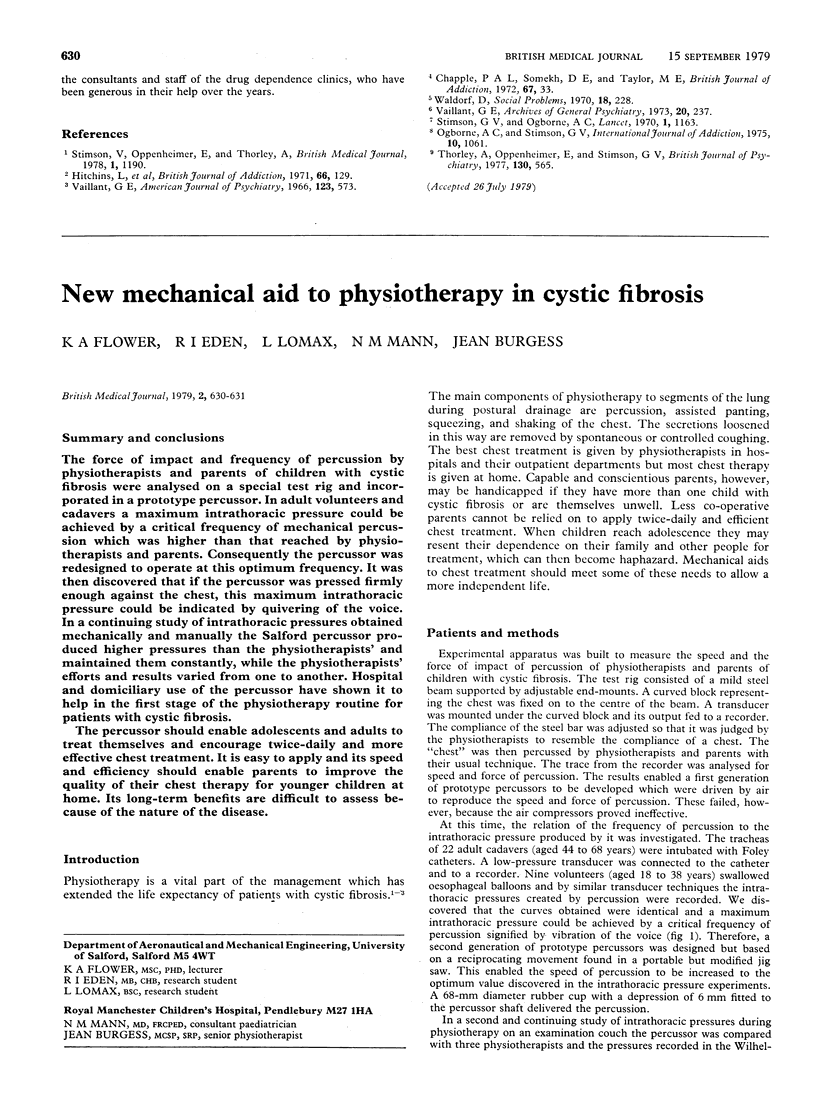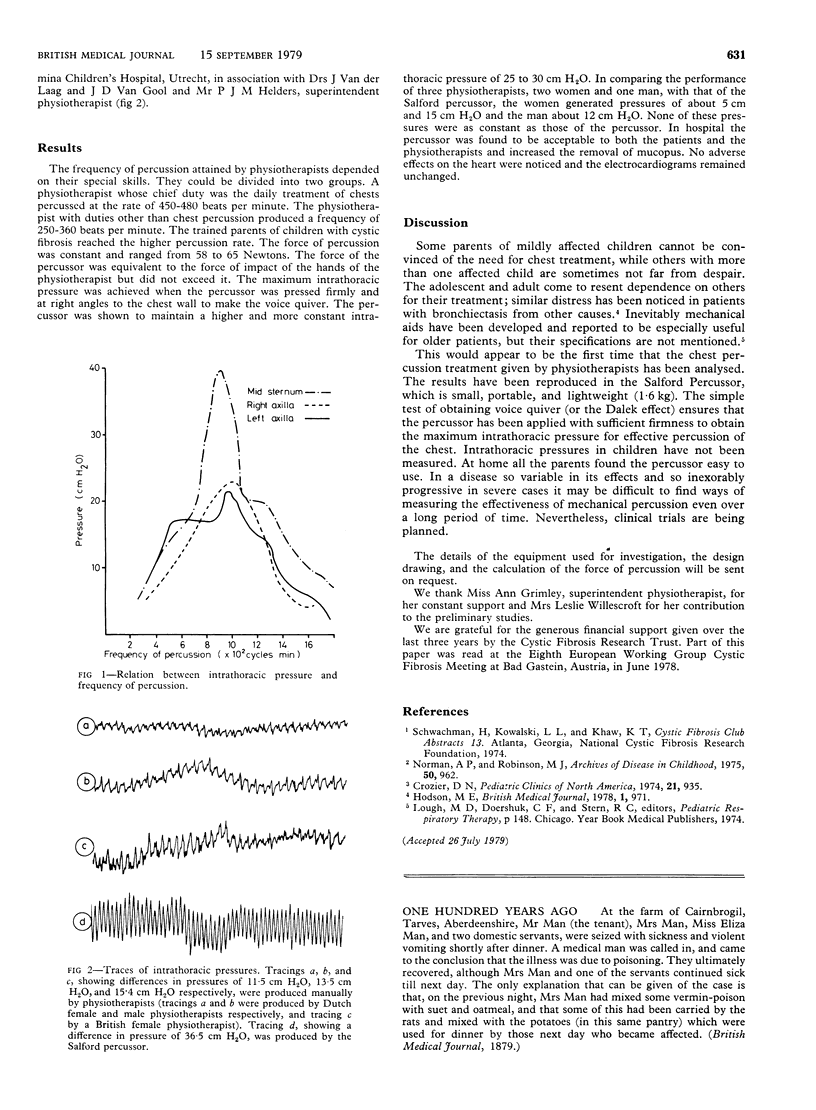Abstract
The force of impact and frequency of percussion by physiotherapists and parents of children with cystic fibrosis were analysed on a special test rig and incorporated in a prototype percussor. In adult volunteers and cadavers a maximum intrathoracic pressure could be achieved by a critical frequency of mechanical percussion which was higher than that reached by physiotherapists and parents. Consequently the percussor was redesigned to operate at this optimum frequency. It was then discovered that if the percussor was pressed firmly enough against the chest, this maximum intrathoracic pressure could be indicated by quivering of the voice. In a continuing study of intrathoracic pressures obtained mechanically and manually the Salford percussor's produced higher pressures than the physiotherapists' and maintained them constantly, while the physiotherapists' efforts and results varied from one to another. Hospital and domiciliary use of the percussor have shown it to help in the first stage of the physiotherapy routine for patients with cystic fibrosis. The percussor should enable adolescents and adults to treat themselves and encourage twice-daily and more effective chest treatments. It is easy to apply and its speed and efficiency should enable parents to improve the quality of their chest therapy for younger children at home. Its long-term benefits are difficult to assess because of the nature of the disease.
Full text
PDF

Selected References
These references are in PubMed. This may not be the complete list of references from this article.
- Hodson M. E. Diseases of the respiratory system: Bronchiectasis and cystic fibrosis. Br Med J. 1978 Apr 15;1(6118):971–973. doi: 10.1136/bmj.1.6118.971. [DOI] [PMC free article] [PubMed] [Google Scholar]
- Robinson M. J., Norman A. P. Life tables for cystic fibrosis. Arch Dis Child. 1975 Dec;50(12):962–965. doi: 10.1136/adc.50.12.962. [DOI] [PMC free article] [PubMed] [Google Scholar]


